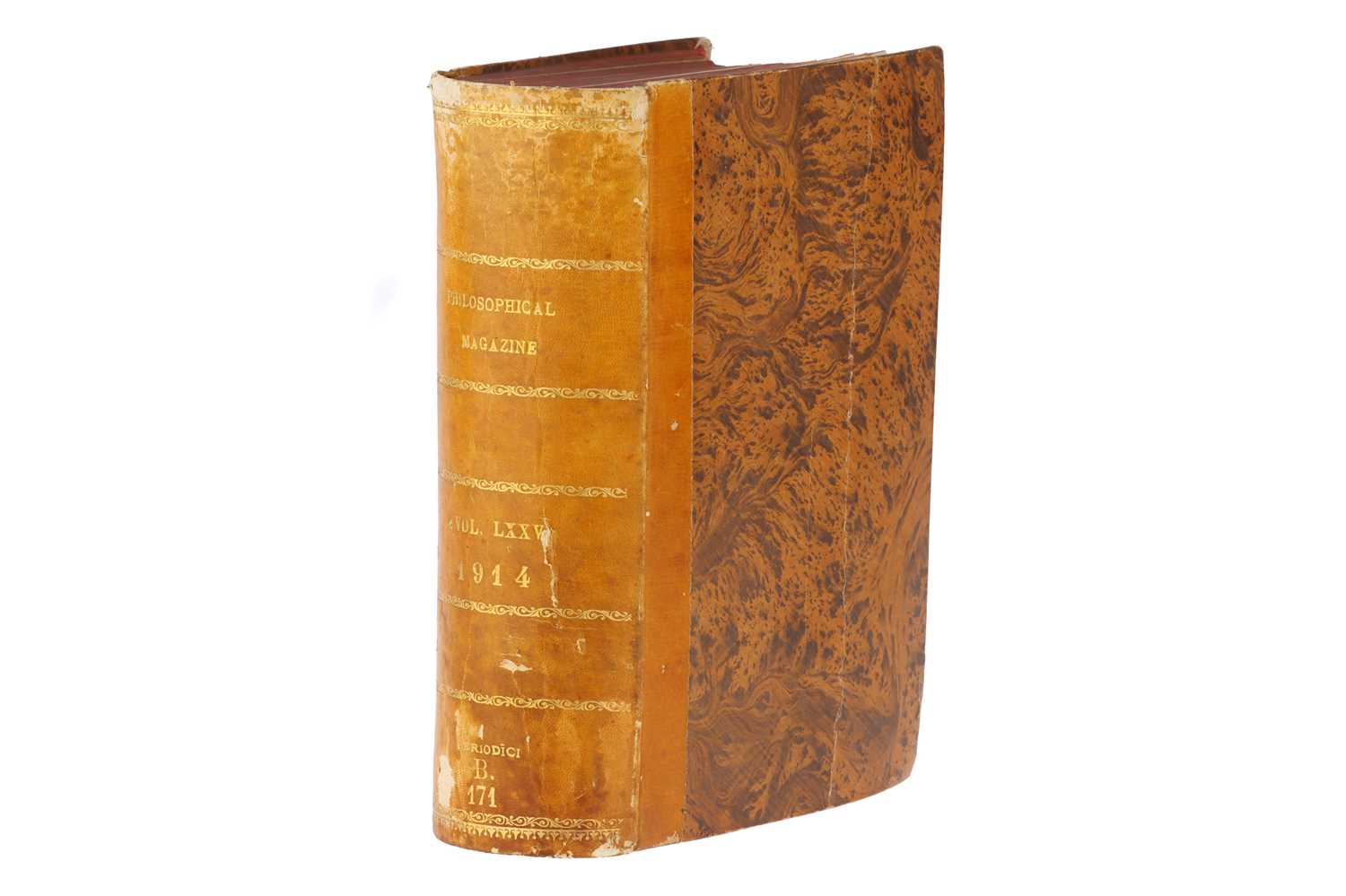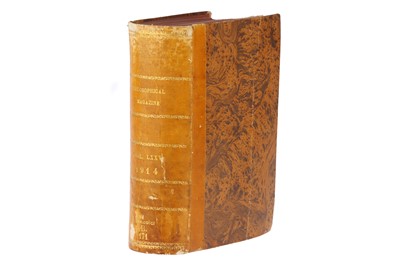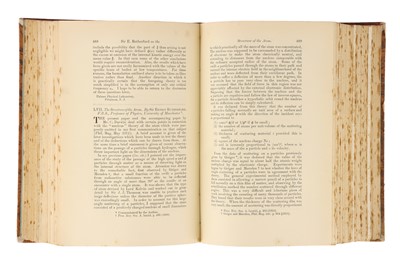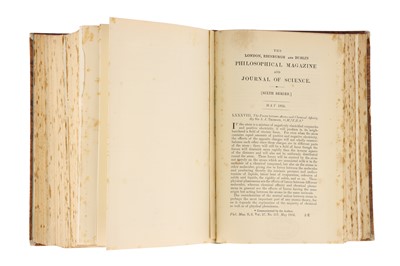24th May, 2023 12:00
Fine Instruments of Science, Medicine and Books
Henry Gwyn Jeffreys Moseley, Work on The Periodic Table
The London, Edinburgh, and Dublin, Philosophical Magazine and Journal of Science, Vol. XXVII. – Sixth Series, January – June 1914, half Faux Calf with marbled boards with scuffs and splits, original wrappers, first edition, first impression of Henry Gwyn Jeffrys paper: The High-Frequency Spectra of the Elements Part II
Mosleys groundbreaking work that was the first time a scientific basis for the understanding of atomic numbers and putting in to order to form the periodic table
"Moseley, working under Rutherford at Manchester, used the method of X-ray spectroscopy devised by the Braggs to calculate variations in the wavelength of the rays emitted by each element. These he was able to arrange in a series according to the nuclear charge of each element. Thus if the nuclear charge of hydrogen is 1, in helium it is 2, in lithium 3, and so on by regular progression to uranium at 92. These figures Moseley called atomic numbers. He pointed out that they also represented a corresponding increase in extra-nuclear electrons and that it is the number and arrangement of these electrons rather than the atomic weight that determines the properties of an element. It was now possible to base the periodic table on a firm foundation, and to state with confidence that the number of elements up to uranium is limited to 92" - Printing and the Mind of Man
"Moseley's fundamental discovery was a milestone in our knowledge of the constitution of the atom" - Dictionary of Scientific Biography
The London, Edinburgh, and Dublin, Philosophical Magazine and Journal of Science, Vol. XXVII. – Sixth Series, January – June 1914, half Faux Calf with marbled boards with scuffs and splits, original wrappers, first edition, first impression of Henry Gwyn Jeffrys paper: The High-Frequency Spectra of the Elements Part II
Mosleys groundbreaking work that was the first time a scientific basis for the understanding of atomic numbers and putting in to order to form the periodic table
"Moseley, working under Rutherford at Manchester, used the method of X-ray spectroscopy devised by the Braggs to calculate variations in the wavelength of the rays emitted by each element. These he was able to arrange in a series according to the nuclear charge of each element. Thus if the nuclear charge of hydrogen is 1, in helium it is 2, in lithium 3, and so on by regular progression to uranium at 92. These figures Moseley called atomic numbers. He pointed out that they also represented a corresponding increase in extra-nuclear electrons and that it is the number and arrangement of these electrons rather than the atomic weight that determines the properties of an element. It was now possible to base the periodic table on a firm foundation, and to state with confidence that the number of elements up to uranium is limited to 92" - Printing and the Mind of Man
"Moseley's fundamental discovery was a milestone in our knowledge of the constitution of the atom" - Dictionary of Scientific Biography





